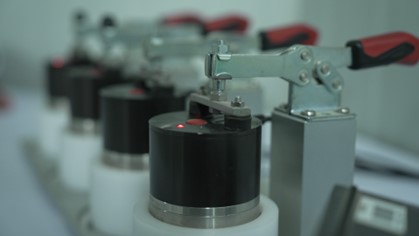Relative humidity of air and seeds

Earlier in this module, you learned from the section entitled ‘Some definitions’ that relative humidity is a measure of how much water vapor there is in the air. Relative humidity (RH) is expressed as a percentage :
When seeds are placed into air of a given RH and a given temperature, the water inside seeds reaches a measurable equilibrium with the relative humidity of the surrounding air, creating a water vapor pressure around the seeds. This can be measured by comparing with what the water vapor pressure would have been, had the air been above pure water. This is called the equilibrium relative humidity (eRH). It can be expressed as a percentage, from zero (a completely dry seed in wet air) to one hundred percent (a saturated seed in dry air).
An alternative way of expressing this dynamic is to divide eRH by one hundred, creating a scale of 0 to 1 – this is the related concept of water activity (aw).
The concepts of equilibrium relative humidity (eRH) and water activity (aw) give us important information. They indicate the type of reactions that can occur within seeds. They can predict how the seeds will age: for instance, seeds with an eRH of 20% will age slowly, whereas those with an eRH of 70% will age faster. By the time eRH has reached 98%, the seeds are ready to germinate. Additionally, eRH predicts how much the seed is respiring – significant rates of respiration only occur when eRH is greater than 85%.
This can be plotted in a graph called an isotherm. Figure 3 (below) plots the moisture content of seeds at different levels of water activity (aw). As the water activity increases, so does the moisture content. This creates a sigmoid curve that models the behavior of seeds, both in storage and in the laboratory.
POLL: you decide
Is equilibrium relative humidity a more useful measure than moisture content when it comes to managing water in seeds?
Let’s see what you and your course colleagues think. Please express your opinion by following this link to the poll.
The results of this poll will be shared with your course colleagues and may be discussed at the next live event.
Technical tip
We recommend you open this in a new tab or window (right mouse click or long press) to enable you to easily return to this page.
Reaching equilibrium
